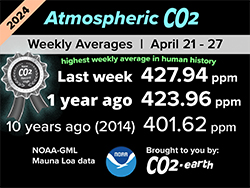All about ERC404
All about ERC404
Welcome to HokenTech
The world of crypto and blockchain is constantly evolving, with new projects being born and developed every day. Some of these projects represent true innovations that have never been seen before.
One such project that seems to be gaining traction is the famous ERC404 contract, which combines two previous standards: ERC20 and ERC721. The former is dedicated to the creation of fungible tokens, while the latter is related to non-fungible tokens (NFTs).
What is ERC404?
Although the name ERC implies that it is a new standard, unfortunately, it is not the case yet. In fact, developers have named this contract in a way that makes it appear as if it is an authorized and controlled standard.
However, the problem with this contract is that it is unofficial, and therefore, the code has not been thoroughly tested and could potentially have undiscovered vulnerabilities that may lead to fund loss or other issues.
What does this smart contract do?
As mentioned earlier, this smart contract combines the functionalities of two standards: one for tokens and the other for NFTs. The innovation introduced by ERC404 is the close relationship between these two assets, where each token corresponds to a related NFT.
Examining the code, one can see that the respective smart contracts for tokens and NFTs are called within ERC404, and they are merged to create additional combinations that allow these assets to be used for trading purposes as well.
How do ERC404 contracts work?
Understanding what these smart contracts do, let’s now delve into how they work. The mechanism is not overly complex and is based on the relationship between token ownership and these special NFTs, which have an interesting function.
When a user receives this type of fungible token, they are also credited with the corresponding NFT. However, if the user sells or transfers the token they own, the associated NFT is automatically burned, and the same applies to subsequent transactions.
How significant is the phenomenon?
Although this smart contract was launched just a few days ago, due to their limited supply, these tokens have experienced a significant surge. The first project to integrate this solution already boasts a market capitalization of over 200 million euros.
The market has quickly taken notice, and efforts are underway to capitalize on this new phenomenon, which could follow in the footsteps of what happened with Ordinals. Statistics related to these projects are already available.
The future of ERC404
It is difficult to predict how the industry will evolve for this type of asset, but we are only at the beginning of this experimentation. Soon, new forms and integrations will emerge, exploring other sectors such as decentralized finance.
Other marketplaces may facilitate the exchange of these assets, similar to standard NFT marketplaces. This will help spread this opportunity and multiply these projects. Perhaps only then will it become something normal and widely accepted in the blockchain industry.
nft, hoken tech, blockchain, cryptoart, eos, nft art, artificial intelligence, ai, watch authentication, crypto artist, nfts, web3, nft game, web3 game, videogame, nft distributor, videogame blockchain







